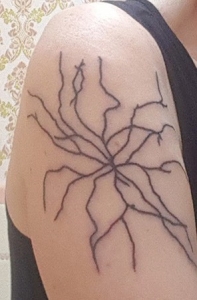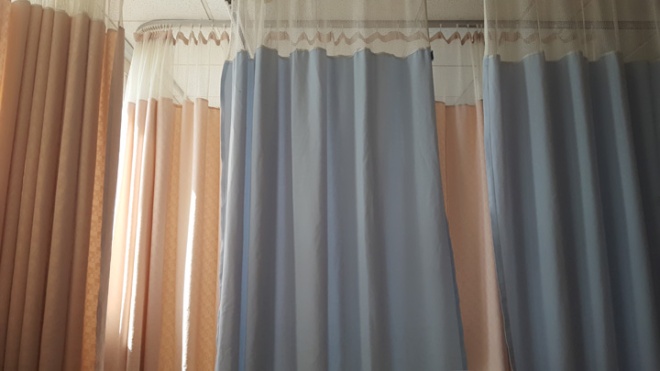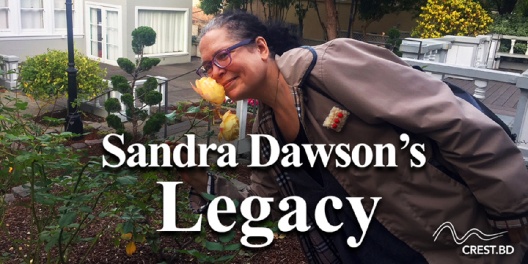Diane Farris Gallery, April 2010
My wife would have been 55 years old today, if she didn’t die of cancer in 2018.
It’s three years later and I’m still grieving. I don’t know how to get over it. (You don’t)
How do you recover from a loss that rips you apart? When your dreams and goals and plans for the future have been stripped away? Memories and self are sucked into a black hole of grief, where nothing seems real any more, and nothing escapes.
I have a history of depression (as you might have guessed), but that pales in comparison to what Sandra went through with severe Bipolar I Disorder. It often take 10 years or more to get a proper diagnosis. Meanwhile, “here’s your Prozac” — which never ends well. Antidepressants can result in hypomania or full-blown mania in undiagnosed bipolar disorder, leading to excessive spending and risky hurtful behaviors.
Sandra was an early adopter of proto-blogging, back when the content was highly personal and the writers were known as online diarists (pre-Facebook, pre-Live Journal).
In April 1994, Sandra wrote this stunning first-person piece on what it’s like to be mired in a relentless depressive state, while anticipating the death of her father (from cancer).
The depths of depression (by S. Kay)
| I just can’t seem to control my emotions, no matter how much I understand them and their causes. I can intellectualize, study, analyze to a fine point, but still not change my behavior. Logic is no help. I have such a degree of understanding that part of me watches my reactions and explains them perfectly even while I fall apart. But so far I still can’t control myself. |
|
|
|
In therapy … I learned how to express myself more, how to communicate to others what I feel (as described by the little logician) and to experience emotions to their full extent instead of quashing them. Feel the feelings. OK.
Sometimes this helped – in releasing old hurts and also riding out cravings. It was good for some applications, and really, repression isn’t a great way to deal with pain anyway. |
| So I know what to do with feelings as they arise (ie. nothing), and also understand why I feel them. The problem? They’re overwhelming. Everything is too extreme, too frequent and too spontaneous. It just flows and flows. |
|
|
|
To use a water metaphor, it’s as though scalding hot water gushes into a bathtub. I know it comes from the water tank, and I know I have to let it drain instead of plug it up and have it overflow, but the tap is stuck all the way open. I can’t turn it off or even adjust it to a steady trickle, and the source never cools off because it’s fueled by crisis after crisis beyond my control. Like my father’s impending death, the current most worrisome situation. |
| I tell myself that I know what I’m supposed to do to cope, I’ve read the books, I know the techniques of dealing with grief now and that if I can get through this without losing it, without drinking or drugs or binging of any kind, that I’ll be free to live the rest of my life. This is one of the hardest things I’ll ever go through. It’s sort of a test, a challenge. |
|
|
|
As with other periods of extreme depression, turmoil and pain, I long for a respite. However briefly, I wish I could escape the pain because IT WON’T STOP, it’s a constant wrenching, anxious, physically disturbing pain that is omnipresent. Erupting in tears frequently. I don’t mind that – I’m told it’s a healthy release and anyhow, I can’t stop it. |
| Yeah, I know it’s a hurtful situation and that all my family feels pain in the face of his death (anticipatory grief) but mine is further magnified by the depression that was already there. Transforming angst into torture. Taking a little dark gray matter and forcing it to expand, to overrun all my brain’s functions, sort of like cancer itself. It seems to want to swell even beyond the capacity of my cranium, forcing tears out of my eyes and pimples on my face. I touch my forehead gingerly, feeling it may explode, that poisonous brains will gush out of my scalp. It’s dizzying, the amount of raw emotion that seems so tangible, so physical. |
|
|
|
How to live like this? Just suffer, suffer, suffer. No way to end it, no help available either by self-medicating or outside medical help. Therapy may be just another crutch anyway. Just suffer. Feel the feelings, understand them, but don’t bother trying to control them. Suffer – live, function as best I can. Eat, watch TV, speak when spoken to, try to sleep. Do what little I can to help my father. Read books and magazines, tears staining the pages despite practicing this most distracting, immersing and escapist of activities. I can’t escape, can’t hide, can’t numb.Television, even, is just a salad dressing, an emotional flavouring that doesn’t disturb the substance of the ever-present gnarl of pain. |
| Perhaps, without conscious attempts at obliteration, my mind will just shut itself down. But I doubt it. I’ve always been present and aware through the most harrowing episodes. Forced to live through it. Suffer, suffer, suffer. It’s SO exhausting. I expect it’ll last awhile, too. |
|
|
|
It begins in the brain, figuratively and literally. A sensation of hollow darkness encased by a taut, achy shell that threatens to explode, surrounded by an aura of prickly numbness. My eyes sting, my sinuses are at the ready. My mouth is dry, my jaw is tight and sore from reflexive clenching that I force myself to stop whenever I realize I’m doing it. My throat is constricted, an ever-present lump of tears at its base emitting adrenaline through anxiety. My lungs rasp from smoking too much. My heart struggles to keep up, speeding up and slowing down as emotions demand, and it often spasms in protest, sending little painful shocks to my chest. My shoulders and back ache, knotted with tension that never gets released, muscles that never get massaged, just exercised by tears and fears. My stomach is alternately bloated with excess depression, nauseated by pain, or empty and ravenous. My uterus cramps itself trying to hide, my genitals irrelevant. My legs and arms sometimes tense and cramp but only if the rest of my body is similarly wracked, otherwise they’re slack, mere instruments for motor reflexes. My hands flutter nervously, wanting to touch, to feed, to change the channel. |
| Mostly though, all is irrelevant, all is secondary to the churning, billowing stem of depression. A new organ, a seething growth sending dull, achy, prodding fingers through my gut as it tries to expand. It forces me to knot up my face with silent screams and burning tears, then abates to leave me trembling and shattered. Clammy with residual emotion, exhausted by the metamorphosis, the invasive states of emotion. It oozes through me, trailing fear, sadness, anxiety and leaving despair as an afterglow. |
|
|
|
Strangely, there is room for flashes of elation, of laughter, in the range of emotion. All is allowed except serenity, all feelings can be experienced as long as they are raw, primal torrents. It’s an alien consciousness, taking away all of myself to replace me with a fountain of negative and positive extremes, blanketed with angst. I’m someone else, someone who produces nothing but sickness. The best I can be is bored and tired, spent after spewing for hours, days, weeks at a time. Hoping that by surrendering it’ll grow monotonous, yet it never is because that’s not what it’s about. It must constantly generate more emotion, more extremes – a perpetual machine, an eternal flame. As hell is described. |
| Nothing to do but over-react to every little detail of existence as prescribed: with illogical, uncontrollable, unbearable emotions. Collapse, then do it again. Suffer, suffer, suffer. |
|






 Modified from Fig 3a (
Modified from Fig 3a (
















